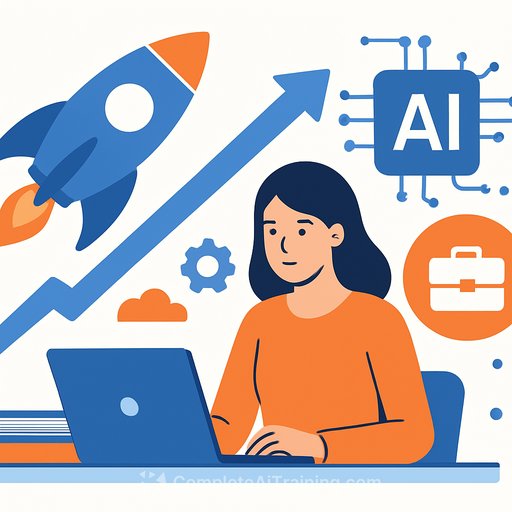AI Is Reshaping the First Job. Student Work Has to Catch Up.
Entry-level roles are disappearing or changing faster than curricula can keep up. One study shows employment for 22- to 25-year-olds in the most AI-exposed fields dropped 13% in just three years. That first rung on the ladder is wobbling.
If students can't rely on traditional starter jobs to learn by doing, they need meaningful work experiences while they're still enrolled. The goal is simple: earn money, build skills, finish the degree, and graduate with momentum.
The Current Reality: Students Work, But It's Misaligned
About 70% of college students work while enrolled. Those jobs pay the bills-tuition, rent, food, childcare, transportation-but they rarely connect to long-term goals.
The consequences are predictable. Working students are 20% less likely to graduate than peers who don't work. First-generation students are more likely to clock 20+ hours a week, yet they access internships at lower rates, according to research from Strada Education Foundation.
Institution-led options aren't always better. More than 90% of Federal Work-Study roles are on-campus jobs with limited career relevance. See the official program overview at studentaid.gov.
What Higher Ed Can Do Now
- Redesign campus jobs into skill-building roles. Convert administrative tasks into projects with clear outcomes: research briefs, content deliverables, client support, analytics sprints. Make the work portfolio-worthy.
- Center the work on transferable skills. Name the competencies (teamwork, communication, time management, data fluency). Require reflection, feedback, and micro-assessments tied to those skills.
- Pay, credit, flexibility-make all three standard. Align schedules to course loads. Offer course credit where possible. Combine hourly pay with tuition support to reduce debt pressure.
- Use your RFPs as levers. Require vendors on major campus projects-IT modernization, facilities, media, events-to hire and mentor student teams for paid, career-relevant work.
- Expand paid internships and co-ops. Build employer partnerships with guaranteed paid seats. Where pay isn't feasible, provide stipends so students with financial need can participate.
- Track outcomes and scale what works. Measure retention, GPA impact, graduation, time-to-job-offer, and starting salary. Fund the models that move those numbers.
Examples Already Working
Campus jobs as launchpads
Arizona State University employs thousands of students in roles beyond the usual desk work-graphic designers, videographers, research assistants, recreation managers. Many jobs align with majors and embed soft-skill development like teamwork, communication, and time management. Students earn a paycheck and build a credible portfolio.
Employer partnerships that reinforce progress
The University of Utah partnered with a national financial services company to place hundreds of students in paid roles that include mentorship, hands-on experience, hourly wages, and tuition assistance. These jobs are structured to support academic progress, not compete with it.
Career-relevant work with real customers
Arizona State University and the University of Texas at El Paso partner with Education at Work, where students serve as tax specialists with Intuit and help individuals prepare returns. Students earn wages, receive tuition support, and develop experience in customer service, compliance, and tax preparation-skills employers recognize.
Implementation Checklist
- President/Provost: Set a clear mandate: student employment must advance learning, retention, and career outcomes. Fund a cross-functional team to deliver.
- Career Services: Map every campus job to competencies and artifacts (portfolios, badges, references). Publish outcomes by department.
- Financial Aid: Rework Work-Study placements to prioritize career relevance and flexible schedules. Pilot tuition-linked earnings.
- Procurement: Add student employment requirements to large vendor contracts. Include mentorship and reporting expectations.
- Academic Units: Offer credit for defined work-based projects with rubrics tied to program outcomes.
- Institutional Research: Monitor equity: first-generation and Pell-eligible students should have equal access to paid, relevant roles.
Why This Matters
As AI compresses traditional entry-level work, student employment can't be an afterthought or a financial stopgap. It should be a competitive advantage-helping learners cover basic needs, finish strong, and move into well-paying roles.
Treat work as part of the curriculum. When every student job builds skills, networks, and confidence, you're not just helping them get by. You're giving them the new entry-level job-one that starts on your campus and ends with a job offer.
Resource for AI skill-building
If you're building short AI upskilling modules to pair with student roles, see curated options by job function at Complete AI Training.
Your membership also unlocks:






